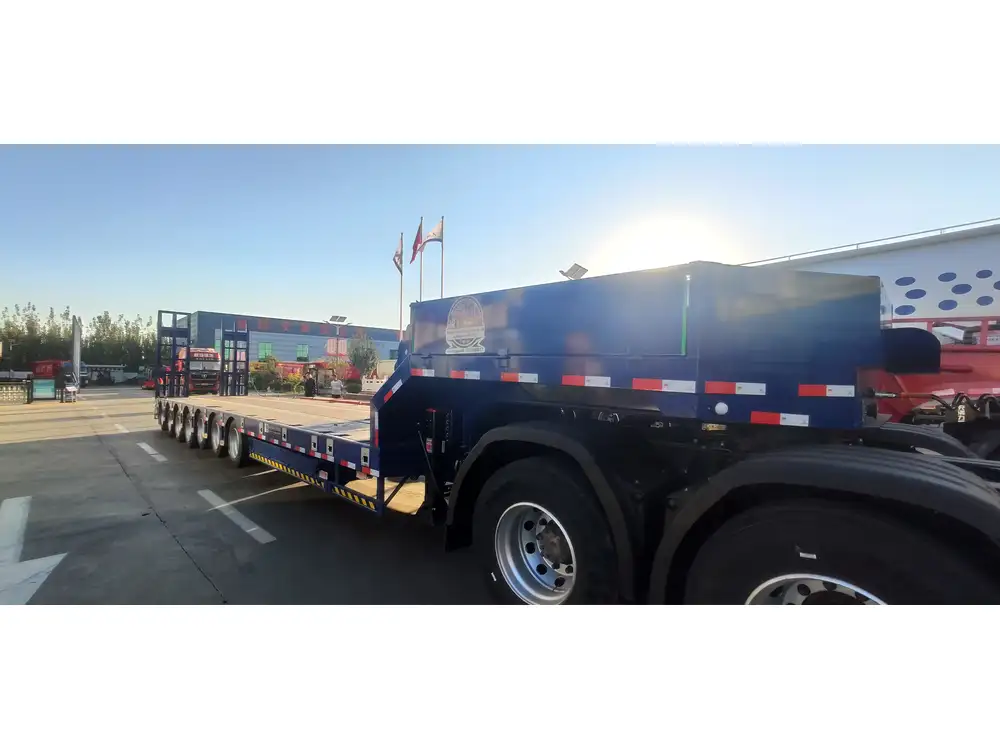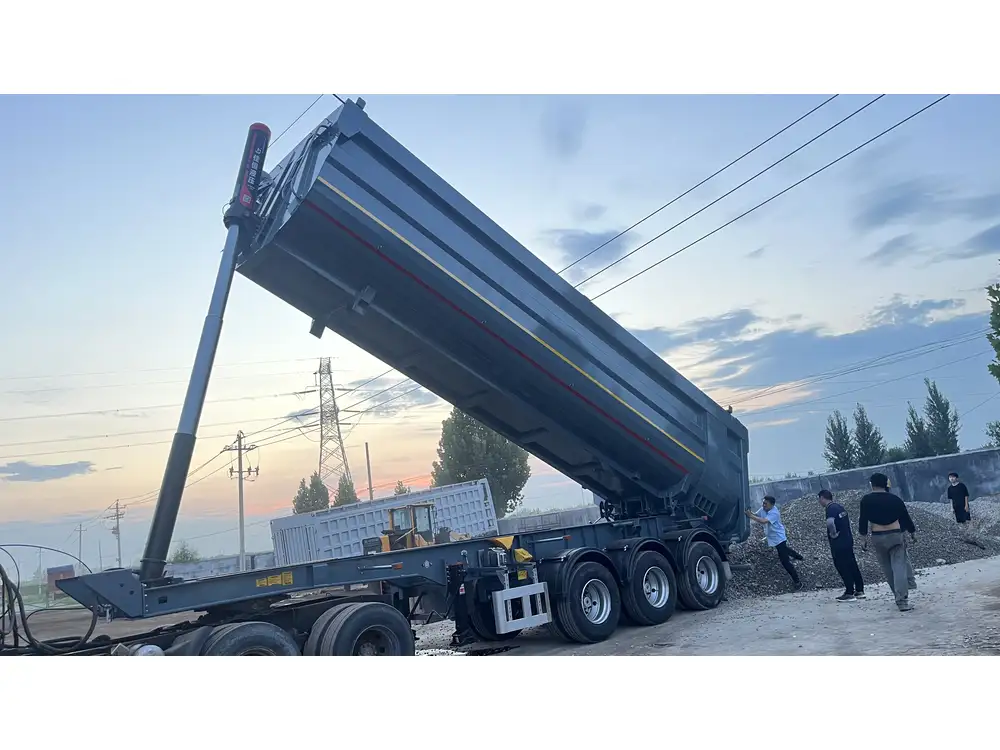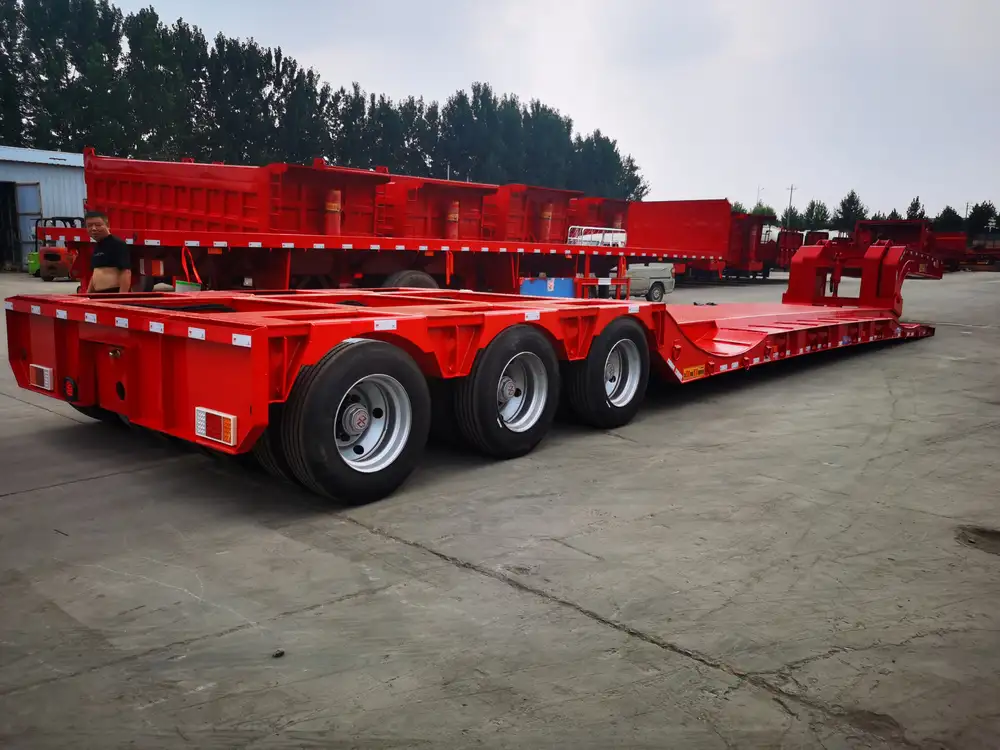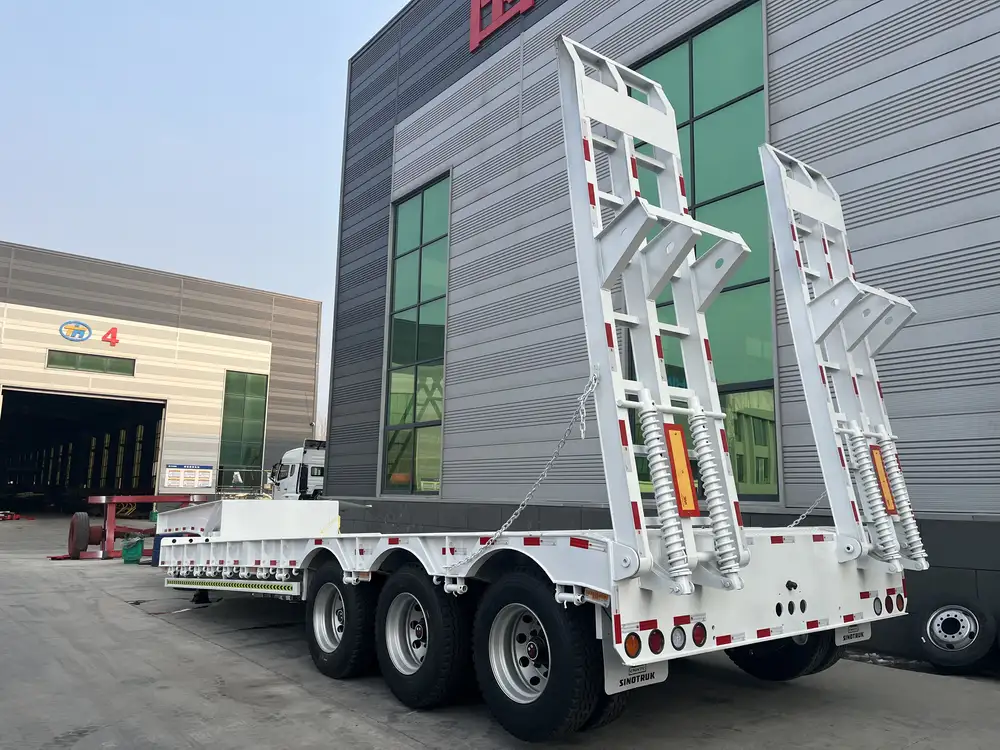Introduction: The World of 18-Wheeler Trailers
At the intersection of logistics, transportation, and commerce, 18-wheeler trailers serve as the backbone of freight movement across various terrains. These robust vehicles, often seen traversing highways, play a crucial role in delivering goods nationwide. A pivotal question arises for both manufacturers and consumers in this field: How long is an 18-wheeler trailer? Understanding this dimension is essential not only for compliance with transportation regulations but also for strategic logistics planning.
Key Factors Influencing 18-Wheeler Trailer Length

1. Federal and State Regulations
The length of 18-wheeler trailers is strictly regulated by law. Most notably, federal regulations stipulate that the maximum allowable length for a semi-trailer is 53 feet when it comes to freight transport. However, variations exist depending on state laws, where some states permit longer trailers. Understanding the interplay between federal and state regulations is crucial for compliance and optimization in logistics operations.
2. Functionality and Purpose of the Trailer
Different types of 18-wheeler trailers cater to various purposes. Here are a few categories categorized by their lengths and functions:
| Trailer Type | Typical Length | Purpose |
|---|---|---|
| Dry Van Trailers | 48 to 53 feet | General freight transport |
| Flatbed Trailers | 48 to 53 feet | Transporting oversized loads |
| Reefer Trailers | 48 to 53 feet | Temperature-sensitive goods |
| Tanker Trailers | 42 to 60 feet | Liquids and hazardous materials |
3. Awareness of Load Limitations
The payload capacity of an 18-wheeler, which must also comply with weight regulations, often influences its needed length. Longer trailers enable more extensive loading, but manufacturers must always balance this against the potential weight limits imposed by the Department of Transportation (DOT).

Why Length Matters: The Impact on Logistics and Operations
1. Impact on Maneuverability
Understanding trailer length is vital due to its significant impact on maneuverability. Longer trailers, while capable of carrying more freight, often pose challenges in urban environments and tight spaces. Conversely, shorter trailers may enhance maneuverability but at the expense of capacity, making it necessary to analyze operational needs comprehensively.
2. Road Accessibility and Compliance
In specific regions, the infrastructure may not support larger trailers. Accessibility can be a concern as well, particularly when navigating bridges, road signage, and weight limits. Logistics managers need to plan routes with these considerations in mind, ensuring compliance and timeliness while avoiding fines and penalties.

3. Fuel Efficiency Considerations
Longer 18-wheelers can have varying effects on fuel efficiency. Fuel consumption tends to rise with length due to increased drag and weight. This underscores the need for careful balancing of trailer length against fuel costs, especially in an industry where profit margins are tight.
The Evolution of 18-Wheeler Trailers: An Overview
The Historical Perspective
The design and length of 18-wheeler trailers have evolved over decades, reflecting technological advancements and changes in regulatory standards. Early trailers were limited in both length and capacity but have progressively embraced innovations, leading to today’s 53-foot designs optimized for both weight and cargo types.

Current Trends in Trailer Design
Recent trends have witnessed the adoption of advanced materials and engineering techniques, resulting in lighter yet stronger trailers capable of enhancing fuel efficiency and payload capacities. Noteworthy innovations include:
- Composite materials: Lightweight yet durable, offering higher strength-to-weight ratios.
- Aerodynamic designs: Reducing drag, which is increasingly critical given rising fuel prices.
- Telematics: Monitoring trailer condition and performance, optimizing load distribution.
Buying Considerations: Selecting an 18-Wheeler Trailer
When selecting an 18-wheeler trailer, several factors warrant deliberate consideration:
1. Determine Your Cargo Requirements
Understanding the goods to be transported is crucial. Are temperature-controlled environments necessary? Will oversized or heavy loads be the standard? Tailoring the trailer choice to these specifics can significantly enhance efficiency and compliance.

2. Regulatory Compliance Checks
Before purchasing, confirm that the selected trailer meets all relevant federal and state regulations. Check length, weight, and permissible configurations to avoid costly violations.
3. Cost Analysis
Longer trailers may incur higher initial costs, but they can also increase revenue potential through expanded capacity. Conduct a thorough return-on-investment (ROI) analysis to determine the most financially viable option.
4. Maintenance Considerations
Routine maintenance is essential for ensuring longevity and performance. Prospective buyers should be aware of maintenance costs associated with different trailer types to set a realistic budget.

Preparing for the Road: Compliance and Best Practices
1. Pre-trip Inspections
Prior to any journey, conducting a thorough pre-trip inspection of the trailer is crucial. This should involve:
- Checking tire pressures and conditions
- Inspecting lights and brakes
- Evaluating cargo securing methods
2. Weight Distribution
Proper weight distribution is essential not only for safety but also for compliance. To ensure even load distribution, consider employing techniques such as:
- Centering heavy loads
- Using load bars or straps to secure cargo
- Regularly weighing loads to avoid exceeding weight limits

3. Driving Practices
Longer trailers require adjusted driving practices. Drivers should be trained to navigate turns, reverse, and park with a focus on safety. Awareness of blind spots and awareness of surrounding traffic is imperative for accident prevention.
Conclusion: The Essential Role of Length in 18-Wheeler Trailers
When encapsulating the question of how long is an 18-wheeler trailer, the complexity of regulations, operational needs, and technological advancements comes into play. Precision in understanding trailer lengths—ranging from 48 to 53 feet—equips manufacturers, logistics managers, and drivers to optimize both safety and efficiency in the transportation sector.
By dissecting the multifaceted components influencing trailer lengths, professionals can navigate the challenges of compliance, maneuverability, and cost-effectiveness, ultimately ensuring business success in the fast-paced world of transportation.
Final Thoughts: Engage and Optimize
Understanding the nuances behind 18-wheeler trailer lengths is not merely a matter of compliance; it plays a pivotal role in operational strategy, safety, and cost management. By embracing information on trailer types, weight regulations, and maintenance requirements, stakeholders can enhance their logistics operations and contribute to a more efficient transport network.
Ready to optimize your fleet? Make informed decisions and take your logistics to the next level with a tailored approach to your 18-wheeler trailer needs!



